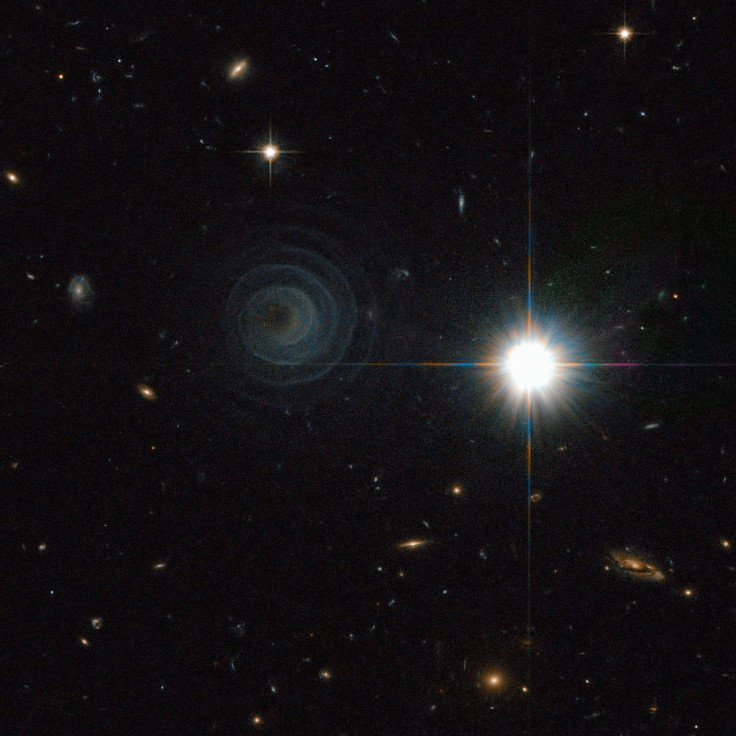LL Pegasi: ALMA Telescopes Capture Stunning Image Of Celestial Spirals Surrounding Binary Star System

In 2010, astronomers using the Hubble Space Telescope captured a stunning image — one that revealed what is perhaps the most perfect geometrical form created in space. The image showed the binary star system LL Pegasi surrounded by intricate rings of gaseous material.

Now, a team of astronomers has used the European Southern Observatory’s Atacama Large Millimeter/submillimeter Array (ALMA) to capture another image of the binary star system and its distinctive rings, providing further clues to how these structures are formed.
“ALMA’s observations, of which this image only shows one ‘cross-section,’ have added an extra dimension to reveal the exquisitely-ordered 3D geometry of the spiral pattern,” the European Southern Observatory (ESO) said in a statement accompanying the image.
Read: ‘Rotten Egg’ Nebula: Hubble Captures The Death Of A Star 5,000 Light-Years Away
The image shows the two stars in the system — LL Pegasi and its younger companion — locked in a “stellar waltz.” LL Pegasi continuously loses gaseous material, slowly morphing into a planetary nebula (a structure that, despite its name, has nothing to do with planets). The spiral pattern is created as the two stars orbit around a common center of gravity in this cloud of gas and dust.
“The spiral spans light-years and winds around with extraordinary regularity. Based on the expansion rate of the spiraling gas, astronomers estimate that a new ‘layer appears every 800 years — approximately the same time it takes for the two stars to complete one orbit around each other,” the ESO said.
A planetary nebula is the fate that awaits all stars with masses from about half that of the sun up to about eight times that of the sun. Approximately 5 billion years from now, when our sun begins to run out of fuel and casts off its outer layers of gas, it will be briefly surrounded by a colorful envelope of gas that will eventually seep away into the vast void of the cosmos.
So why are these structures called “planetary” nebulae if no planets are involved in their creation? The misleading name was coined by the 18th century astronomer William Herschel, who, having just discovered Uranus, thought the objects resembled gas giants. We continue to use the misnomer out of convenience.
© Copyright IBTimes 2024. All rights reserved.





















